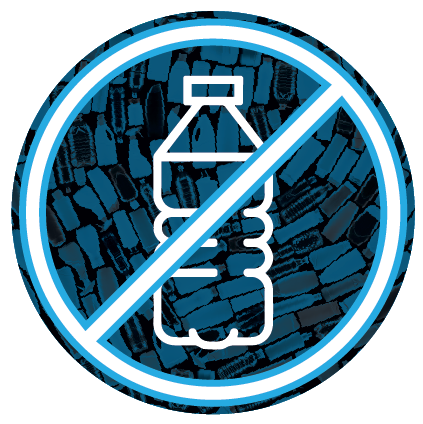As more companies work to decrease their carbon footprint, many are finding that reducing or eliminating single-use plastics can be an important part of an “all-of-the-above” approach to sustainability. SWCA decided to eliminate single-use plastic cups, plates, utensils, and disposable water bottles in all our offices nationwide, which was a key step in reducing our consumption of nonrenewable resources. If your company is navigating its own sustainability path, we’d like to share a few key takeaways, valuable lessons, and tips for success we learned through our own process of reducing single-use plastics.

Key Takeaways:
Earn buy-in from local staff
Affecting change at the organizational level can be challenging, but it isn’t impossible. Buy-in from company leadership is one of the first steps, but it doesn’t stop there. You also need support throughout your company structure. Talk to your people and determine who will be responsible for implementing these changes at the local level. For example, you may have an administrator who is the purchaser for each office. Without their support, you might struggle to build momentum.
Audit your current processes
Take a close look at your current purchasing habits. You need to know what items your company uses before you can determine what needs to be replaced with a more sustainable alternative. You may find that the items targeted for replacement differ from office to office or group to group; be flexible in your recommendations. Also, take note of existing stock and use up these materials during your transition.
Do the leg work
Set your teams up for success by providing them with the resources needed to make the transition smoother. Don’t put your foot down that there will be no more plastic utensils, and then simply hope for the best at the next office potluck. Do the research, find sustainable alternatives at comparable price points, and be prepared to discuss some realistic options. This isn’t a test for individual offices to solve on their own. Help take the guesswork out of the equation and provide them with some thoughtful and considered ideas.
Logistics are important
Companywide or office-wide purchasing is more feasible when everything you need can be accessed in one place. Assess your existing vendors and distributors to see if they align with your new path for purchasing. Remember: sustainability is much more than the types of items you purchase. Take the time to thoroughly research your vendor’s materials, ethical sourcing, and sustainable business practices. At SWCA, we found bamboo to be an excellent replacement for some of the plastic items we used, so we searched for a source where we could purchase them regularly.
Many hands make light work
It takes a village—recruit a team of excited and passionate ambassadors to create and communicate the new change throughout your company. SWCA’s Green Team Network and Environmental Sustainability Committee played pivotal roles in significantly reducing our plastic consumption nationwide.
Help people understand the why
When people better understand the motivation behind a major change, they are less likely to resist it. Explain how this small step connects to the bigger picture and your companywide goals. It’s not only about using a plastic spoon in a small office; it’s about the much bigger cumulative effect your organization has on the environment and its role in protecting the planet.
Lessons Learned:
Persistence is key
SWCA is fortunate to have several factors supporting this change, including a significant interest from top company leadership. Even so, this program requires all offices to participate over the long term, and its success rests on concerted efforts at the local office level, follow-ups to accommodate busy schedules, and individual discussions about the specifics of each office’s strategy.
Make the business case for sustainability
Be prepared to justify why the transition to sustainability practices is a sound business decision for your company. Sustainability can sometimes take a back seat to profits and projects, so bring hard data and your A-game when presenting to leadership.
Progress over perfection
This program is a balancing act between the needs of the environment and the needs of our company. At SWCA, we held no expectations of perfection during the program’s rollout, and we knew we’d have to make some compromises. Substantial changes often happen one step at a time, so focus on the incremental gains toward your bigger sustainability goals.
See our 2023 Sustainability Report to learn more about sustainability at SWCA. For more information, please contact efagan [at] swca [dot] com (subject: The%20Wire%20-%20Key%20Takeaways%20for%20Reducing%20Single-Use%20Plastics%20in%20Offices) (Eileen Fagan).
